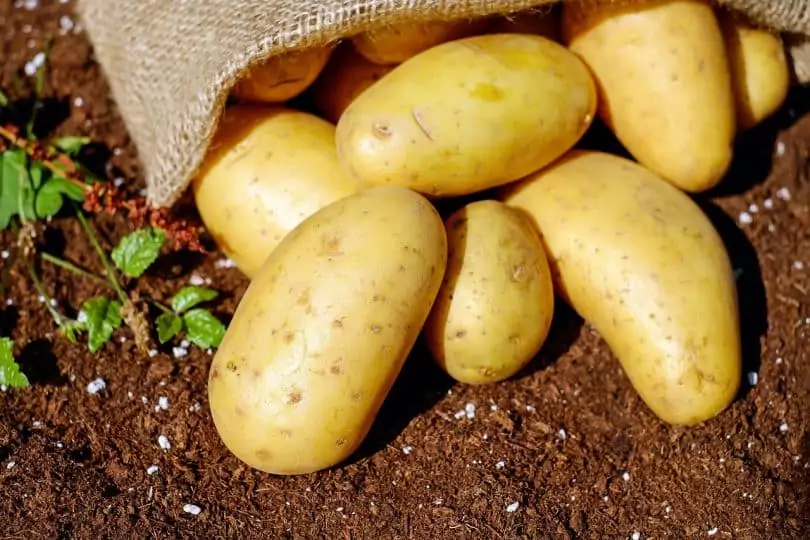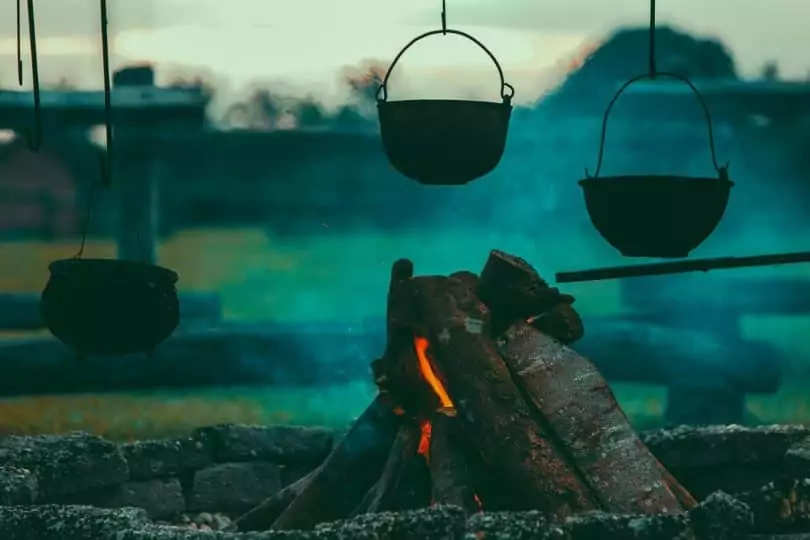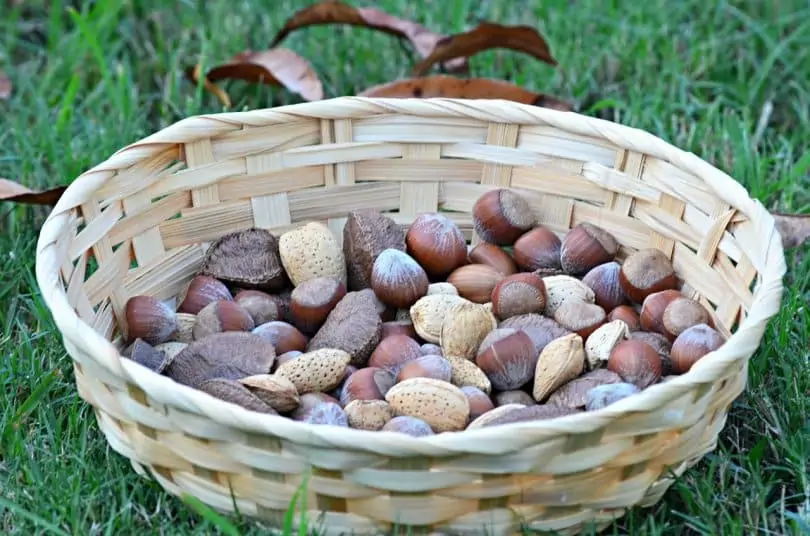When you are out in the outdoors, putting in whole days of activity, you need food that will sustain you, fortify you, energize you and taste great. This content will help you get your food ready with the essential backpacking food tips.
Getting your food ready is an imperative stride in planning for a backpacking adventure. You want to ensure that you pack out meals that can withstand the situations of outdoor trip, require less planning, furnish you with sufficient nutrition, and taste great.

You likewise would prefer not to overlook some important things, like your morning espresso. You also would prefer not to pack more or less. In this article, we are going to take you through some vital tips to remember when packing food for your backpacking trip
Tips to Keep You Eating Well on Your Backpacking Trip
The fact that you are far from home, doesn’t imply that you have to trade off your great dietary patterns. When backpacking, it is quite easy for an already prepared meal to spoil rapidly and it is very challenging to get access to healthy meals. This leads you to fall back on eating undesirable food.

Obviously, you would prefer not to convey so much food that it burdens you, so you may consider bringing along junk foods instead. Eating good food as a backpacker is not required to be an overwhelming experience. Here are essential tips, that will improve your backpacking eating, regimen and cooking.
Reflective insulation cooking
When you’re out in the forested areas and still wish to prepare your food utilizing less fuel, a reflective insulation cooking pot and lid can provide the solution. You can prepare more food from the warmth inside the foils. The reflective insulation is conservative and flexible as well as impervious to tears and cracks prone to happen in the forested areas.
This cooking strategy does not constrain the measure of meal you cook, which means that you can likewise eat well while hiking. Take note of this next time you are embarking on your backpacking trip.

Be aware of your local plants
Did you realize that local plants could save lives? Before embarking on your trip, examine which plants are eatable and which are harmful. You will be stunned at the level at which wild organic products, mushrooms, and roots can prove to be useful. These products of the soil give you vitamins. It is a smart thought to have a good manual on eatable plants, it will enable you to distinguish the good ones from the bad ones. Here are some important tips on how to find edible food in the wilds, check it out.
Carry Instant meal
An amazing hack for a hiker is instant meal. They are an absolute necessity pack when you are planning for a backpacking trip. Potatoes are an incredible instant meal staple and instant noodles and rice supplement any food. These food kinds, have great carbohydrate supplements which give vitality. Instant meals enable you to save some time on searching for food when you have settled down for the day.

Carry sun tea with you
To get access to the most sumptuous sun tea in the forested areas, gather herbal tea sacks in your food list. Put the sack in a container of water and place it in the outer pocket of your rucksack for a couple of hours. Peppermint, chamomile, ginger, Rosehip tea and lemon balm are some examples of what you can take along.

Sun tea, keeps you consistently hydrated as well, it is an incredible contrasting option to just water. It’s likewise a fundamental cure just in case you get cold during the adventure or if that you have a stomach pain or upset.
Carry handy energy bars
Energy bars are lightweight and they are highly nutritious. Select the ones with a good amount of caloric density for your trip and try to maintain a strategic distance from ones which has high sugar proportion. They are incredible for when you require an energy increment and have some hours to go before the time to eat your food. Check out our piece on the best energy bars for camping that can nourish you while on the move.

Prepared dried vegetables and fruits before the adventure
You can never turn out badly with dried vegetables and fruits. Before setting off, get ready dried vegetables and fruits. The fruits are good for your snack time and breakfast recipes. The dietary value that dried leafy foods are sufficiently high to keep you going. If you add nuts to the fruit, then you have snack time sorted out. To find out how to dry your food, read our piece on how to dehydrate fruits, vegetables and meat for camping.
Always hydrate
The main hydrator is water; you require a lot of water as a hiker. On account of nature, you don’t have to carry lot of water along in the event that you convey water filters. Natural springwater source, is the cleanest and purest. You just filter to flush out the possible dirt brought on by aggravation in the water.
Do not take water from stale lakes as there is a danger that the water is sullied past filtration. In case you are uncertain about the water then it is best to boil and filter it so as to pulverize microorganisms in the water. To learn how to purify water using bleach, see our previous article for more insight.

Good packaging
As a hiker, you are probably going to travel long distances, which means that you require your meal to remain fresh. To shield your food from destroying, you could utilize hacks, for example, vacuum sealing the meal.
To prevent your bread from getting stale, load it in a concealed bottle in order for it not to be exposed to air. It additionally prevents it from crushing. It may go stale, but it should still be eatable if you want it.
As a hiker, you need to keep up the level of your calories, and the ideal approach in doing that is to eat food that is nutrient rich and healthy. Backpacking is great and there is no preferred fun over that with great meals!
Qualities of Good Backpacking Foods
Toward the day’s end, you simply need to expend enough fuel to allow you to move from one distance to another, without getting sick and without losing much energy. However, there is a lot more to backpacking meals than that. If possible, backpacking food should likewise be:
Tasty
This can frequently get put into the base of the heap for lightweight hikers hoping to keep their backpacks very light. However, aside from the transitory pleasure one gets as a result of tucking into tasty meals, the foresight of an extraordinary tasting food to anticipate toward the end of a hard day of hiking can likewise boost morale. It can be immensely motivational and a merited reward.

Filling
You may want to complete every backpacking food feeling full and fulfilled. There is nothing more terrible than viewing your empty plate of food with a couple of hours until breakfast and a sounding stomach. You should go and sleep with a full tummy so as to prevent you from awakening hungry in the middle of the night. It will likewise keep you warm during the night in the event that you are enjoying the great outdoors in a cool atmosphere.
Lightweight
For those backpacking for a couple of days or weeks without the opportunity to load backpacking food stuffs, having food that is greatly lightweight is important. It likewise should be genuinely conservative in order for it to not fill your entire backpack. How light? Most hikers will feel good conveying around 700g of food every day.
High calorie
The higher the level of calories, the less you will have to eat. Furthermore, the less you have to eat, the less you will need to carry. How high? In the event that you can go for around 125 calories for every Oz (30g), then 3000 calories for each day ought to be sufficient if you are climbing moderate distances. Of course, this is extremely subject to your particular needs and levels of effort and so forth, and it is likewise very hard to accomplish unless you try to pick calorie filled food.

Easy to cook
You won’t want to spend hours over preparing a truly intricate meal after an exhausting day on the trail. You likewise won’t have adequate pans for anything perplexing. So keep the cooking as easy as possible. This is particularly imperative in the event that you are backpacking in awful or frosty conditions. Everything turns out to be more troublesome in gloved hands.
Quick to cook
The faster you can cook your hiking food the better. Time duration of cooking, will likewise greatly affect the amount of fuel you should take along, which will just add more to the heaviness of your backpack. Snappy and straightforward is critical.
Nutritious
It is very essential to make sure your food has the appropriate nutrient that you require. Your immune system will take a battering when backpacking for a considerable length of time on below normal rest and it is not the ideal time to pass up a great opportunity for key vitamins. Backpacking activity is an intense exercise and it consumes much of calories and supplements. It’s imperative for the meal to be thick in supplements and calories so as to refuel your body system.

Finding Backpacking Foods
Buy easy to discover staples from food stores
Some prepackaged meals that make perfect outdoors foods, for example, cereal, instant milk powder, trail mix, tortilla, snack bars, couscous, noodles/pasta and instant rice can be obtained directly from food stores.
Difficult to find items, for example, dried vegetables and beans, powdered eggs, fruit and vegetable powders, powder-eggs, instant lentils, instant quinoa and solid, high-calorie foods made with whole organic and food ingredients, for example, non-dairy milk powder, and instant brown rice can be discovered online and various food stores.

Read the cooking guidelines in advance
Check out for any extra ingredients that are necessary to set up the dish before buying it. Replacement can be done for some basic ingredients, for example, olive oil for spread, and dehydrated vegetables for fresh.
Peruse the nutrition label
Check out the nutritional panel for every item ahead of time to figure out whether it will contain adequate calories. Calorie requirement is contingent upon the territory and personal needs. A proper requirement is to search for foods containing no less than 100 calories for each ounce.
Search for fast cook foods
Avoid packaged meals that take more than 10mins to simmer. Search for cook periods of 10mins or less, particularly for longer adventures when you will have to apportion fuel. Quick or instant cooking doesn’t mean you need to purchase the greatly prepared, purge nutrition foods found in many packaged meals.
Most wholesome meals – except for unhulled cereals, uncooked beans, uncooked or parboiled rice, and thick expelled pasta – can be prepared utilizing the boil and soak technique.

Best Backpacking Food Ideas
Here is a rundown of the best food ideas for backpacking composed by recommended meal:
For Breakfast
Breakfasts for backpacking can range from quick and essential such as an energy bar to a plushy spread such as eggs, meats, pancakes and espresso. A hot supper can give you an additional boost, genuine, yet a light snack implies no cleanup and a snappier beginning. Here are the popular choices for backpacking breakfast:
Oatmeal Packets: This is a backpacking meal staple. The best thing to know about these oatmeal packets is that they fill in as a bowl. Simply add high temp water to warm the oats inside. Buy the assortment pack.
Corn Meal: You don’t need to be Southern to enjoy corn meal. As simple as oats and can be a good expansion to stir up your food plan.
Dried Fruits: Fresh fruit is typically too heavy and fragile. Dried fruit gives thick sugar, which can definitely be a healthier option than candy.
Seeds and Nuts: Nuts are a top notch approach to pack in thick calories, healthy fats and oils and protein. There are incalculable assortments of nuts also – peanuts, sunflower seeds, cashews, almonds, pistachios, pecans, walnuts and pumpkin seeds to give some examples.
Powder Meals: There is a huge amount of powder choices out there. From whole meal substitutions to weight lifting nutrients. Plan to keep it negligibly processed, give nutrition and taste great.

For Lunch
As opposed to taking a delayed break for a midday food, a snappier technique is to consume on various modest vitality boosting snacks for the duration of the day. Here are the popular choices for backpacking lunch:
Meats: Hamburger jerky, tuna and salami are examples of non-cook meats for a backpacking trip. None of them need to be refrigerated. Every one of them are delicious and high in sodium and protein. Awesome for a fast lunch.
Cheese: This can be a heavy meal for some ultralight hikers. However, it can give a great deal of calories and fat. Also, it can truly upgrade the meat season. Go for harder cheeses, for they are greatly shelf stable.
Tortillas: Bread can be excessively fluffy and bulky for hiking. Tortillas are conservative and withstand a beating. Awesome for wraps -Meat and Cheese, Peanut Butter and M&Ms, Hummus and Peppers.
Green-belly meal: This is the best backpacking food. Ultralight, ready-made and stacked with a standard 33 percent of your DV of Calories, Fats, Fiber, Protein, Sodium and Carbs. Every single natural ingredient.
Bagels: If tortillas are extremely flat, bagels can help give that good “lighten” surface of bread. They are a less fragile and a more packable choice.
Crackers: This is High in sodium and carbohydrates. Place them on the outward part of your backpack with a bandanna on the off chance that you think they will get crushed inside.
For tips on how to plan your lunch meals for backpacking, see our invaluable article on this topic.

For Dinner
This is your reward after completing your backpacking day. Boondocks gourmets wouldn’t fret with the challenge of making generous dinners out at the colossal view. Most tired hikers, however, prefer the include-boiling- water comfort of prepackaged dehydrated or freeze-dried foods, or simple dishes, for example, pasta. Here are the popular choices for backpacking dinner:
Instant noodles: Get instant noodles rather than pasta. Instant noodles generally needn’t bother with a great deal of cleanup unlike creamy pastas which is able to leave your cup or bowl a sticky chaos. They likewise have a good measure of carbohydrates.
Instant rice: An amazing base for a hiking dinner feast. There are likewise innumerable rice assortments with various seasonings and veggie ingredients at the grocery store.
Couscous: Prepare in five minutes – considerably faster compared to rice or noodles. The light surface can be a pleasant dinner help. Great in fiber.
Instant potatoes: This is another hiking staple and amazing dinner base. Ultralight backpacking meal with sodium and carbs. Include meat, oil or flavors, to enjoy it.
Dried veggies: It is difficult to eat good meals on the trail. Dried veggies are a special case. You can join them with any of the food items recorded above, and have a pleasant backpacking feast.
Lentils: In the family of legume, Lentils are an antiquated superfood, rich in protein, fiber, calories and Iron. Takes a couple of extra minutes to prepare.
Freeze dried foods: Include hot water, mix, seal and after that hold up a couple of minutes. A lot of options of recipes, flavors and brands to pick from for dinner.

Concluding thoughts on this topic
Most backpackers would prefer to save weight by taking along one less meal and taking off. But, bringing somewhat additional is ideal, particularly if things do not end up going as planned. With the underlying assumption that every backpacker has his or her own specific manner of getting things done, we know these tips may not work well for every backpacker.

However, ideally there are some recipes or tips here that will really help you a lot. But in case you have any other tested-and-tried backpacking meal tips to share, you can share them by leaving a comment below.








Ah good ol trail mix and beef jerky. But I got sick of it over a while. Now with all your great food ideas, I’ll never starve in the woods. But I really want a nice hot nourishing meal. How can I heat food quickly when backpacking?
You might not to want to start a fire for a quick meal. You can bring along a camping stove that will heat your meals and has little cleanup and you can get right back on the trail!
I was always struggling to get the best meal plan. I had gone through some other articles and tried many things. Seems like this has covered everything. Anyway, do you think similar plan will be good for a small group as well? I am thinking of carrying all these.
For sure.